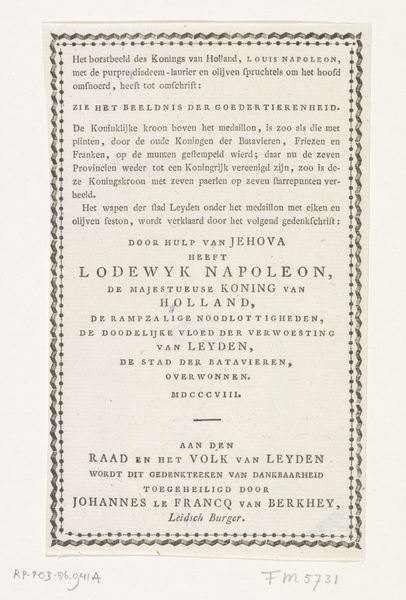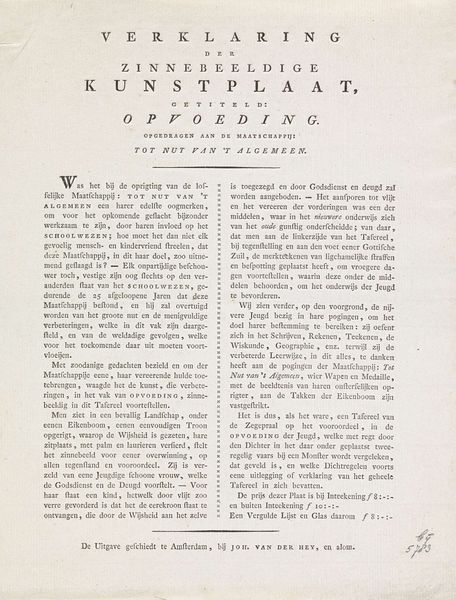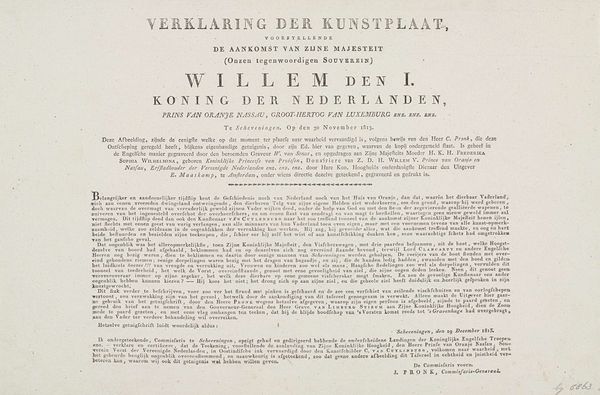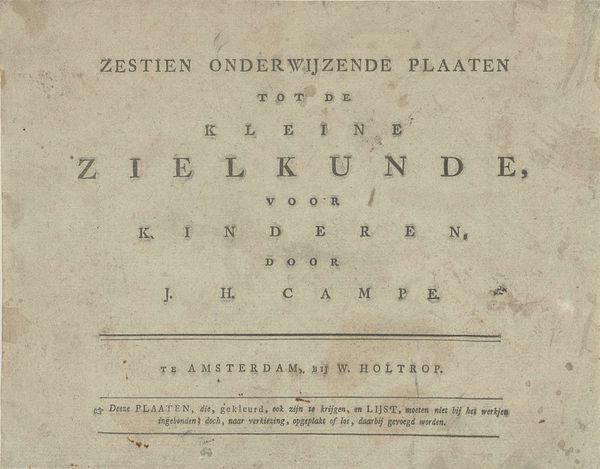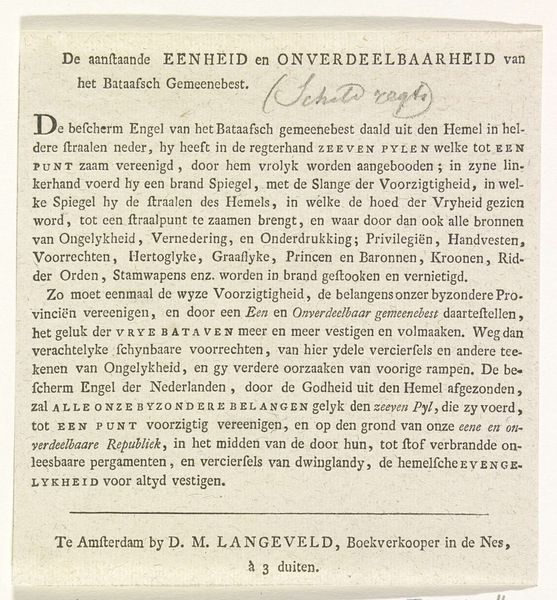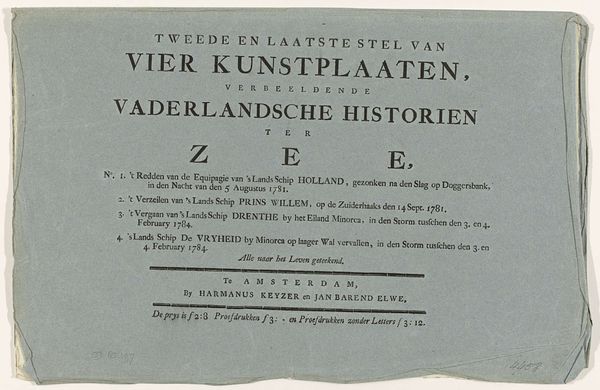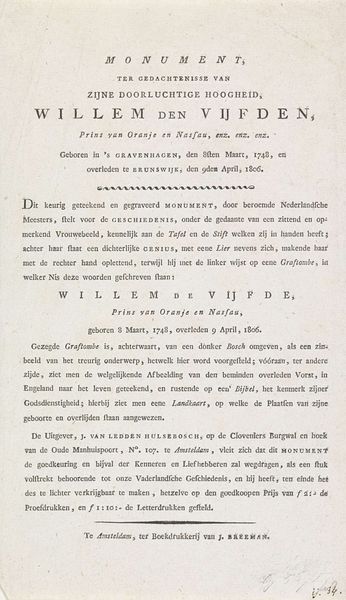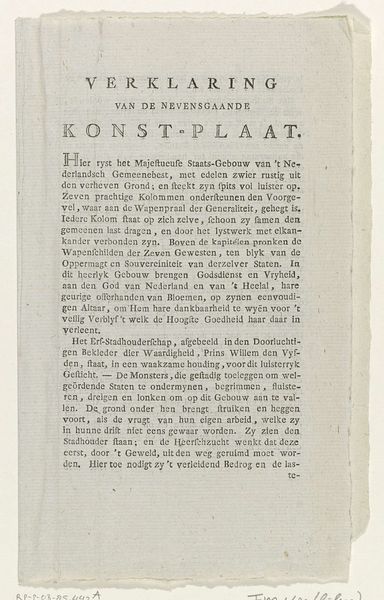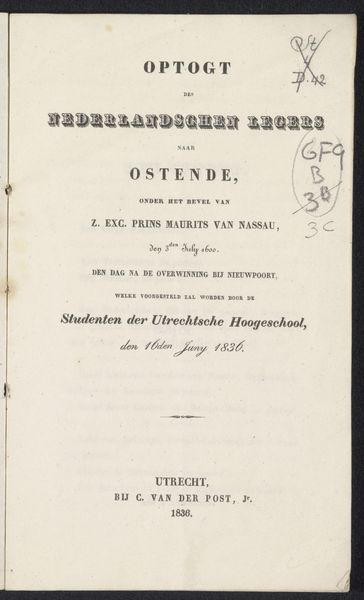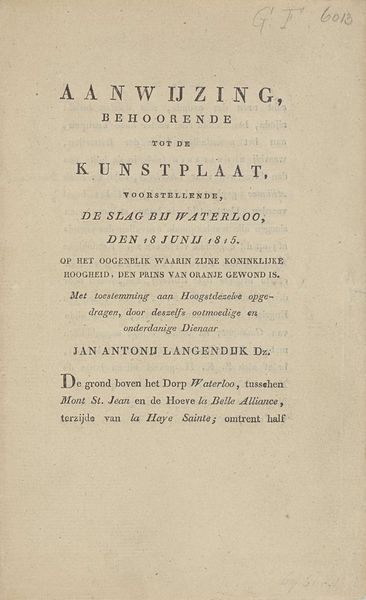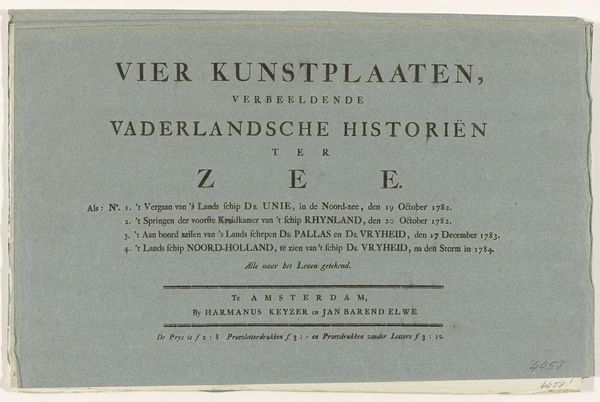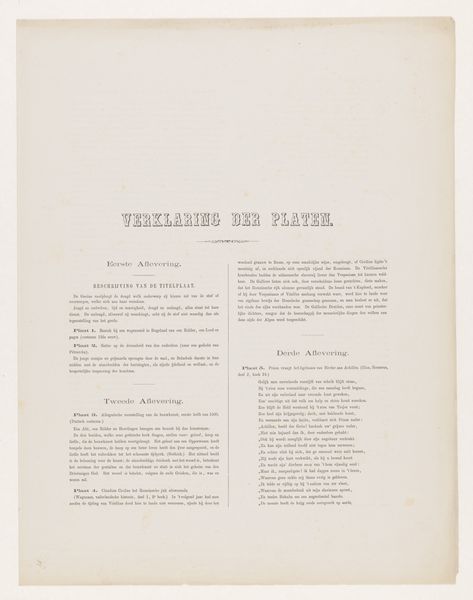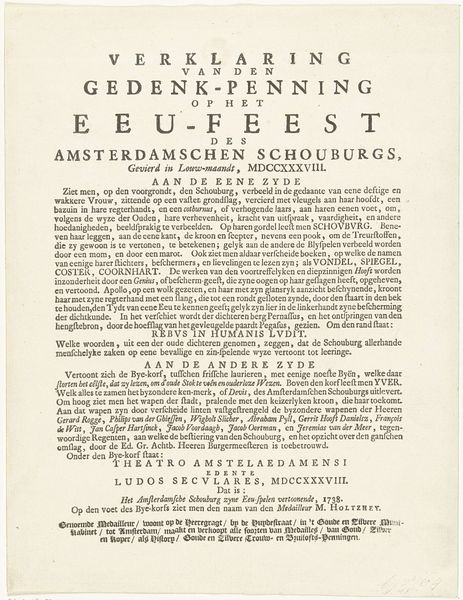
Verklaring bij de prent van de ruïnes op het Rapenburg te Leiden na de ramp, 1807 1807
0:00
0:00
print, engraving
#
script typeface
#
aged paper
# print
#
paragraph style
#
romanticism
#
yellow element
#
stylized text
#
thick font
#
history-painting
#
handwritten font
#
golden font
#
classical type
#
engraving
#
historical font
Dimensions: height 263 mm, width 200 mm
Copyright: Rijks Museum: Open Domain
Editor: Here we have a print from 1807 by P.H. Meyer & Co., titled "Verklaring bij de prent van de ruïnes op het Rapenburg te Leiden na de ramp, 1807," which translates to "Explanation of the print of the ruins on the Rapenburg in Leiden after the disaster." It looks like an engraving on aged paper with quite stylized text. The overall feeling I get is of solemn observation, as if documenting a tragedy. What historical context can you provide to understand its significance? Curator: Indeed. This print depicts the aftermath of a devastating explosion that occurred in Leiden in January 1807. A ship carrying gunpowder exploded in the Rapenburg canal, causing immense destruction and loss of life. This event became a significant moment in Dutch history, marking a shift in how the public viewed disaster and its representation. Note the detailed depiction of the ruined buildings; this was meant to both inform and elicit a strong emotional response from viewers. Consider how the print, as a mass-producible medium, served to disseminate information and shape public memory. Editor: It's fascinating how the print was used as a tool for public mourning and documentation. Would this tragedy and its representation in prints like these have affected government policies at the time, maybe in regards to urban planning or safety regulations? Curator: Absolutely. Such events often served as catalysts for social and political reform. Disasters like this explosion in Leiden forced authorities to re-evaluate existing safety measures and urban planning strategies. The print, in that sense, became not just a record of the event, but also a subtle form of social critique and a call for accountability. Editor: It’s remarkable to see how this print acted as a kind of news report, a historical document, and a political statement all in one. It gives a rich sense of the period. Curator: Precisely. Examining art like this through a historical lens reveals its dynamic role in shaping societal understanding and driving change.
Comments
No comments
Be the first to comment and join the conversation on the ultimate creative platform.
